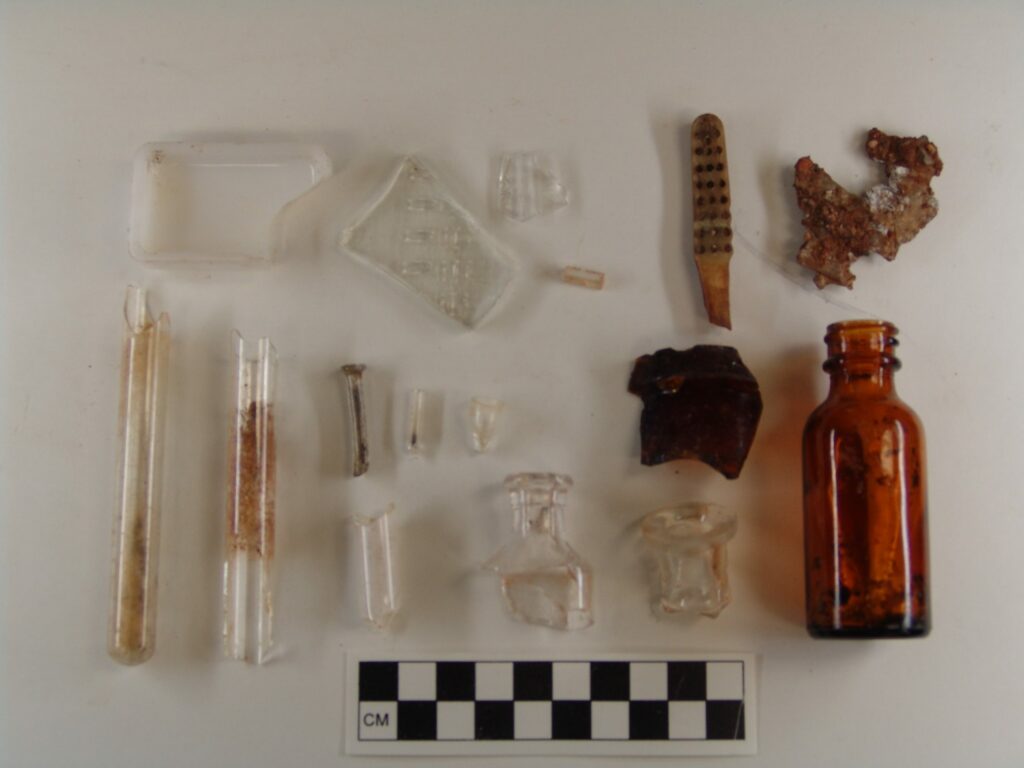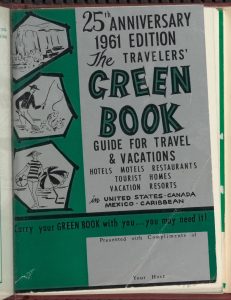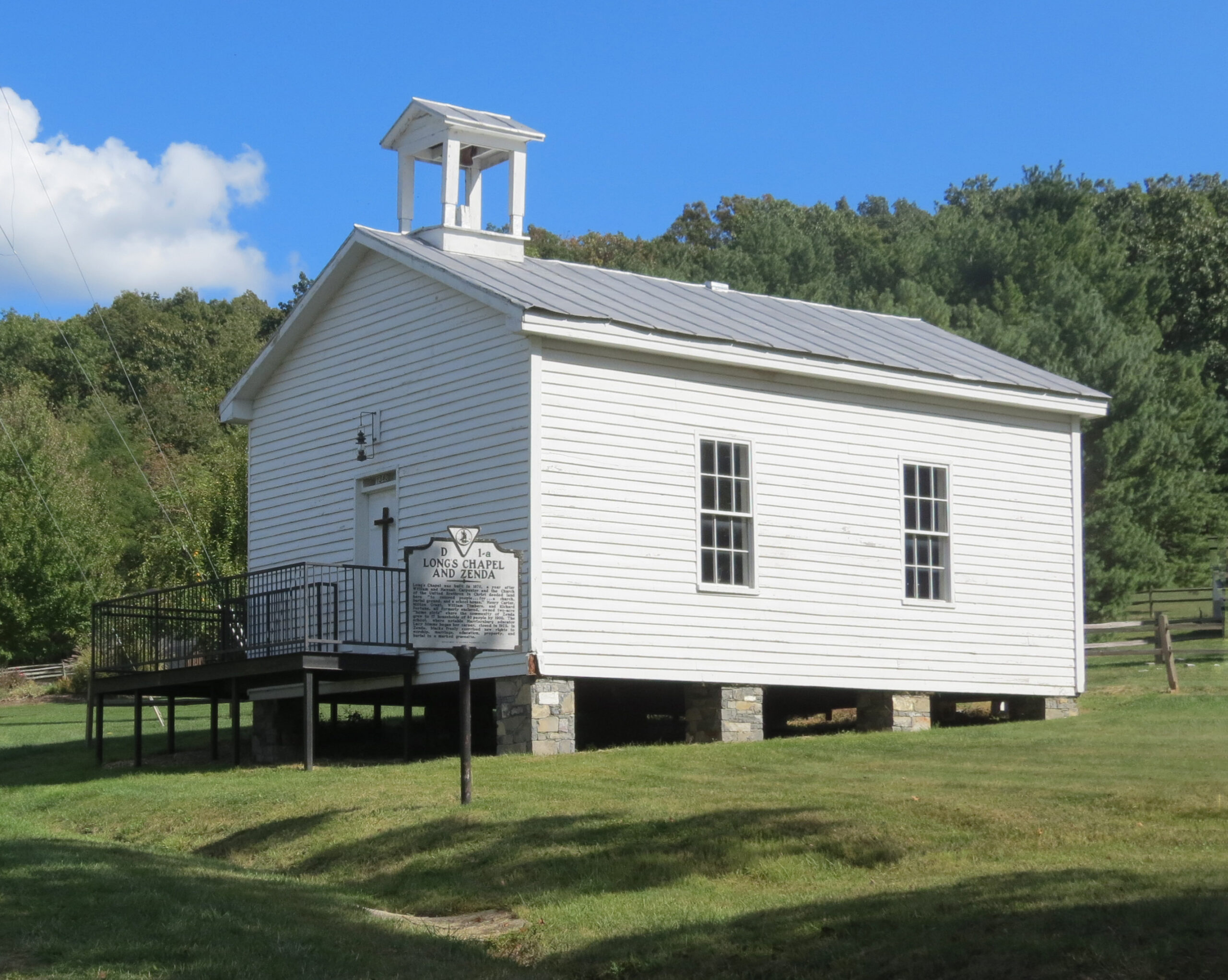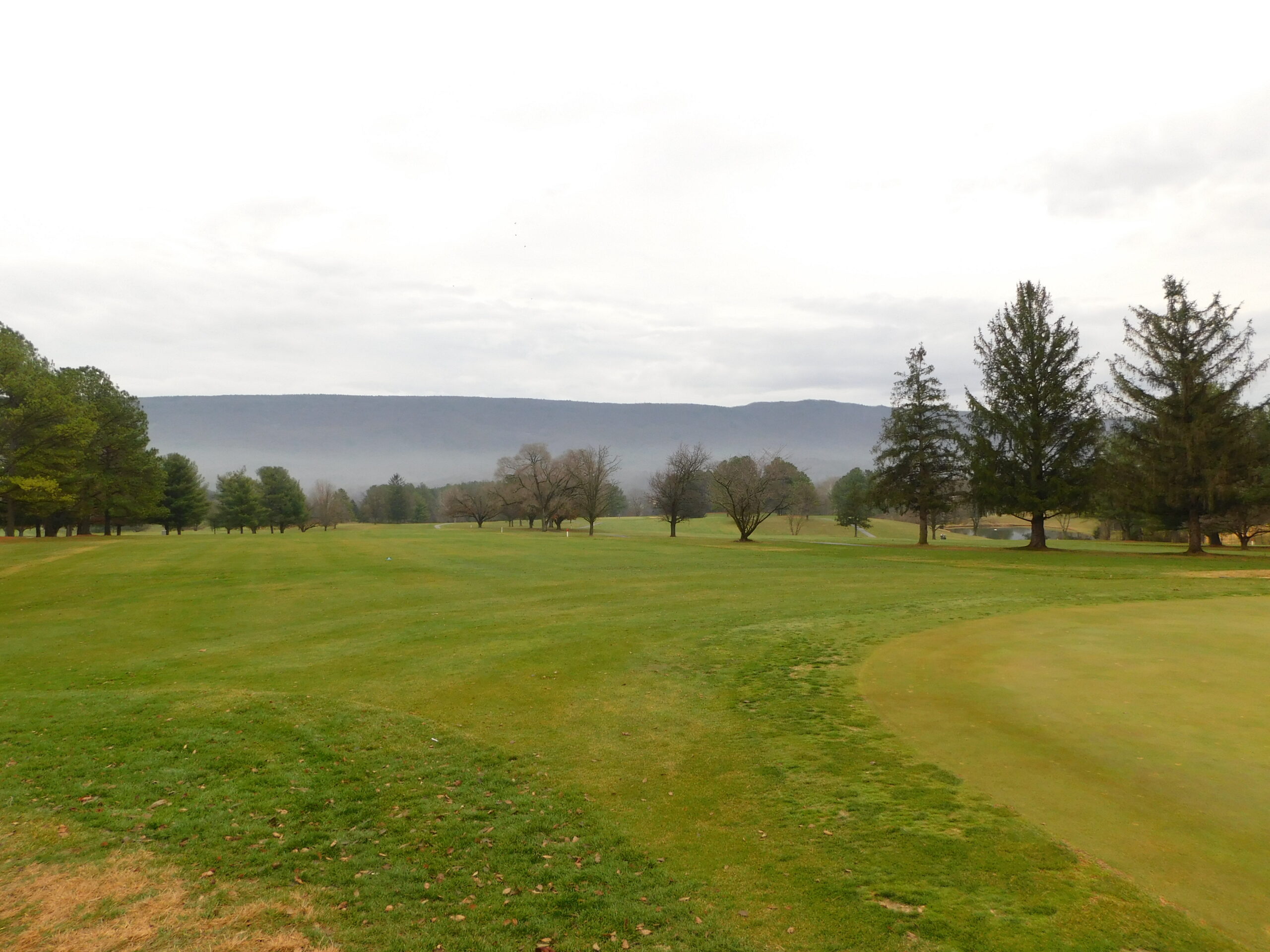“Prompt Accurate Prescriptions”: Baldwin’s Pharmacy and the 1961 Green Book

DHR State Archaeologist Elizabeth Moore explores the significance of the 1961 issue of the Green Book, a popular 20th-century travel guide for African Americans, and the historic Baldwin's Pharmacy in Martinsville.
The 1961 Green Book
First published in 1936, the Green Book provided recommendations for lodging, dining, and automobile service for African American travelers. Initially published for vacationers in the New York metropolitan area, the Green Book’s demand reached a height so great that by 1937, the scope of its listings was expanded to cover the entire United States.
Against the backdrop of Jim Crow–era segregation in the U.S. South, the Green Book published a curated list of destinations—hotels, restaurants, beaches, and various businesses—across the country that welcomed African Americans. In turn, the book’s information helped Black travelers avoid the difficulties associated with racial inequality and prejudice on the road: “Just what you have been looking for!! Now we can travel without embarrassment” (Green 1948). In its 1961 Silver Edition, the Green Book expanded its coverage to include listings in Bermuda, Canada, the Caribbean, Mexico, and the West Indies. The book’s last edition was published in 1966.
In 2018, the staff of the Fairfield Foundation began to research Green Book listings in Virginia with support from Virginia Humanities. The New York Public Library (NYPL) digitized many Green Book editions and made them available on its website. Fairfield Foundation staff examined all available editions at the NYPL and created a spreadsheet of 283 Virginia places that were listed in the books.
The 1961 Green Book featured four location listings in Martinsville, Va.:
- Baldwin's Pharmacy 141 Fayette Street
- Dillard's Enterprises 802 W. Fayette
- Mitchell's Motel & Luncheonette Highway 220 2 miles south of Martinsville
- New Nightingale Luncheonette 610 W. Church Street
In this article, I will be discussing Baldwin’s Pharmacy.Baldwin’s Pharmacy and the Baldwin Block
Baldwin’s Pharmacy, also known as Baldwin’s Drugs or the Baldwin Business Center, was built by Dana O. Baldwin, a medical doctor, in the 1920s. It was home to a variety of businesses, including a pharmacy, offices for a doctor and dentist on the first floor, a small hospital on the second floor, and a pool hall and bar in the basement. Located at 141 Fayette Street, Baldwin’s Pharmacy was an important part of a vibrant African American neighborhood.
Inside Baldwin’s Pharmacy, 1950s. Photo: FAHI/VFH. Baldwin moved to Martinsville in 1910 and became the first African American physician in the city. Born in Chatham County, N.C., in 1881, Baldwin enrolled at Shaw University in Raleigh at age 13. He graduated from the Leonard Medical College of Shaw University in 1910 and moved to Martinsville to assist Dr. J. M. Shackelford as an anesthesiologist. Baldwin was the first doctor from Martinsville to join the service during WWI in 1917. He returned after the war in 1919 and, within a year, purchased most of a city block of land on Fayette Street, between Moss and North Barton Streets, that would become known as the Baldwin Block. He also bought a field where he opened a wood yard and began producing cement blocks, which he used to construct his buildings.
The Baldwin Theatre and Drugstore opened in 1922. Baldwin often partnered with his brothers to expand their businesses, which included a wide range of services, from housing developments, manufacturing companies, and amusement parks, to baseball grounds, restaurants and the Rex Theater, among a plethora of other venues. The Baldwins’ Sandy Beach Resort, located on the Smith River, offered swimming, boating, guest rooms, concessions, and stage concerts.
Baldwin began operating his business in 1922 in a building located on the corner of Fayette and North Barton Streets. The building also housed his medical offices. It burned in 1929, but was rebuilt and expanded as a two-story brick building to include St. Mary’s Hospital, the first hospital for African Americans in Martinsville, on the second floor. The building featured a full basement that functioned as the Green Dragon, a pool hall and bar.
Baldwin and his brothers were catalysts in the growth of a prosperous African American community along Fayette Street that centered on the Baldwin Block. When Baldwin died in 1972, his brother Sam inherited several of his businesses. Sam Baldwin died only four months later, and many of the Baldwin businesses lasted for only a short time after. Once the businesses closed, the buildings along the Baldwin Block degraded quickly and were removed by the City of Martinsville in the 1970s as part of an urban renewal initiative. The lots on the Baldwin Block remained empty until the construction of the New College Institute building in 2014, a non-contributing structure in the Fayette Street Historic District. The Fayette Street Historic District includes 16 blocks of commercial, religious, educational, and residential buildings. This area, along with 100 blocks on Fayette Street (now demolished), developed as the commercial and institutional center of the African American community in Martinsville during the first half of the 20th century and in the Jim Crow era of segregation.
Archaeology and Public History at Baldwin’s Pharmacy
In 2007, the author conducted excavations at the site of Baldwin’s Pharmacy. Following destruction of the building in the 1970s, the lot had been used to host car shows, tent revivals, and community events, all of which resulted in highly compacted soils. To supplement the hand-excavated units, the City of Martinsville donated a backhoe for the excavation of two trenches. Volunteers from the Archaeological Society of Virginia, the Virginia Museum of Natural History, and Martinsville High School assisted with excavation and screening.
The archaeological team and the Fayette Area Historical Initiative (FAHI) hosted weekend events where members of the community could visit the site and volunteer. Individuals who remembered Baldwin’s Pharmacy before it was demolished were invited to participate in oral history interviews.
The archaeologists’ work resulted in an artifact assemblage that reflected the variety of functions this building hosted. Artifacts were displayed on-site for community days and used to trigger memories during oral history interviews.
Baldwin’s Pharmacy was much more than a place for “Prompt Accurate Prescriptions,” as advertised in the 1961 Green Book. Not only could travelers buy prescriptions there, they could also dine, access a range of medical services, and learn about many other options available to them in the neighborhood and in the city’s surrounding area. The pharmacy would have served as a source of information for additional places that were not listed in the Green Book—like the Paradise Inn, which hosted popular entertainers such as Tina Turner, James Brown, and Ray Charles, or Sandy Beach, where visitors could access a swimming pool and a hotel. For travelers relying on the Green Book to locate safe and welcoming places, Baldwin’s Pharmacy served as the entry point to a vibrant African American community.
—Elizabeth Moore
DHR State Archaeologist
State Archaeology Division
•••
References
Bing, John P.
2004: Portraits and Pathology: Portraits of Early Men and Women of Medicine in Henry and Adjoining Counties of Southern Virginia. Bassett Historical Center, Bassett, Virginia.Blanton, Alison S.
2007: Fayette Street Historic District. National Register of Historic Places Nomination Form. Virginia Department of Historic Resources. VDHR #120-5003.Fairfield Foundation
2018: Gone Before We Knew to Look: Searching for Green Book Sites in Rural Virginia. https://fairfieldfoundation.org/gone-before-we-knew-to-look-searching-for-green-book-sites-in-rural-virginia/. Accessed February 1, 2022.Fayette Area Historical Initiative (Martinsville, Va.), and Virginia Foundation for the Humanities and Public Policy (FAHI/VFH)
2006: Fayette Street, 1905-2005: A Hundred-Year History of African American Life in Martinsville, Virginia. Fayette Area Historical Initiative, Martinsville, Virginia.Green, Alma D., editor
1961 : 25th Anniversary 1961 Edition The Travelers’ Green Book Guide for Travel & Vacations. Victor H. Green & Company. Schomburg Center for Research in Black Culture, Manuscripts, Archives and Rare Books Division, The New York Public Library. "The Travelers' Green Book: 1961" New York Public Library Digital Collections. Accessed February 1, 2022. https://digitalcollections.nypl.org/items/5ae34320-942e-0132-7630-58d385a7bbd0Green, Victor H. & Co.
1948: Green Book: A Classified Motorist & Tourist Guide Covering the United States & Alaska. Victor H. Green & Company. Schomburg Center for Research in Black Culture, Manuscripts, Archives and Rare Books Division, The New York Public Library. "The Negro Motorist Green Book: 1948" New York Public Library Digital Collections. Accessed February 1, 2022. https://digitalcollections.nypl.org/items/70651400-893f-0132-f4b5-58d385a7bbd0Hellman, Susan
2020: Virginia Green Book – Work in Progress. http://virginiagreenbook.com/. Accessed February 1, 2022. New website can be found here: http://community.village.virginia.edu/greenbooks/Henry County, Virginia Courthouse 1920: Deed Book 40:512&513.
Moore, Elizabeth A.
2011: Excavations on the Baldwin Block, (44HR0200). Quarterly Bulletin of the Archeological Society of Virginia 66(4):169-180.New York Public Library
The Green Book. https://digitalcollections.nypl.org/collections/the-green-book#/?tab=about&scroll=2. Accessed February 1, 2022.











